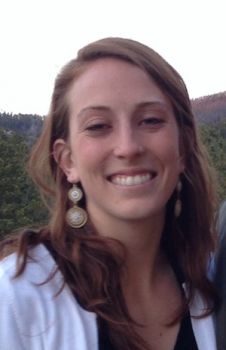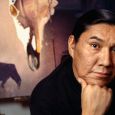The Gift of South Dakota
Subscriptions to South Dakota Magazine make great gifts!
Subscribe today — 1 year (6 issues) is just $29!
Curbside Wisdom
Aug 20, 2014
So I'm sitting on the curb in Mission and a gal named for an Italian artist walks up and talks to me about eradicating institutional racism in South Dakota.
These things happen. Pull up a seat with us on the curb.
Morandi Hurst grew up in Rapid City. She majored in history at Vassar. She missed the Plains and wanted to benefit her home state and her community, so after graduating in 2010, she came home. But since she wasn't into welding, jobs were scarce. With regret but needing to pay the bills, she got ready to leave for a job in L.A.
But a day before decamping, she got a call from a friend working for Teach for America at Spring Creek Elementary, by the Little White River on the Rosebud Reservation. Spring Creek needed a teacher's aide (“paraprofessional,” we write impressively on résumés). “Wanna come?” her friend asked.
Hurst saddled up, headed east and fell in love. Spring Creek, she says, is the most beautiful place in the world (and this from a gal who grew up in the Black Hills). Spring Creek kids and parents, she found, are delightful. She worked alongside Kate Haswell in a mixed grade 1–8 classroom and decided she wanted to be a teacher.
But adding teaching certification to her degree would take a year and cost about $10,000, and lovely as they are, the trees of the Little White River canyon grow neither money nor time.
Fortunately, Hurst found a quicker, cheaper option. The friend who recruited her was one of three Teach for America teachers at Spring Creek. All three inspired Hurst to join TFA, which would pay for her certification and put her in a classroom right away. It wasn't easy: Hurst had to attend a five-week boot camp in Phoenix teaching children in summer school (talk about learning on the fly) and commit to cramming all the contact hours required for teaching certification around full-time work during the school year, but she did it.
Spring Creek didn't have an opening during her first year in TFA. She thus taught and obtained her certification at Littleburg Elementary (still in the heavily Native American Todd County district), then transferred to Spring Creek for her second year in TFA.
TFA recruits serve two years. But Hurst, like a third of TFA's alumni since 1990, remains in the classroom. She is starting her third year as a teacher at Spring Creek Elementary, this time teaching grade 6–8 reading and math. And like every proud teacher, she rattles her Spring Creek students' accomplishments: four students on full scholarships to Phillips Exeter Academy summer school; an eighth grader studying earth science through the University of California-Irvine on full scholarship; another eighth grader winning a national poetry award; three Spring Creekers winning the statewide science fair; half the students enrolling in Saturday enrichment classes taught by teachers volunteering their time.... All of those accomplishments and more, Hurst says, belie the bad reputation that too many South Dakotans give to Indian students and schools.
Hurst loves her work and her school. But why do it here, in South Dakota? She says she believes we all should serve our home, and her passion is here.
And then, as we sit on the curb in Mission, she says we need to fight this fight.
“What fight?” I ask.
“The fight for educational equity for Native American students," Hurst says. That means giving her Spring Creek kids the same opportunities as white kids. That means seeing Indian kids graduate at the same rate as white kids. That means making institutional racism no more.
“And how do you erase institutional racism in your classroom?” I ask.
“I don't,” Hurst says. “I live through my students, help them learn, and help them build a strong sense of self and community so they can fight that fight themselves.”
So that's how we eradicate institutional racism. Funny the things we learn on the curb in Mission.
Editor's Note: Cory Heidelberger is our political columnist from the left. For a conservative perspective on politics, please look for columns by Dr. Ken Blanchard on this site.
Cory Allen Heidelberger writes the Madville Times political blog. He grew up on the shores of Lake Herman. He studied math and history at SDSU and information systems at DSU, and has taught math, English, speech, and French at high schools East and West River.











Comments